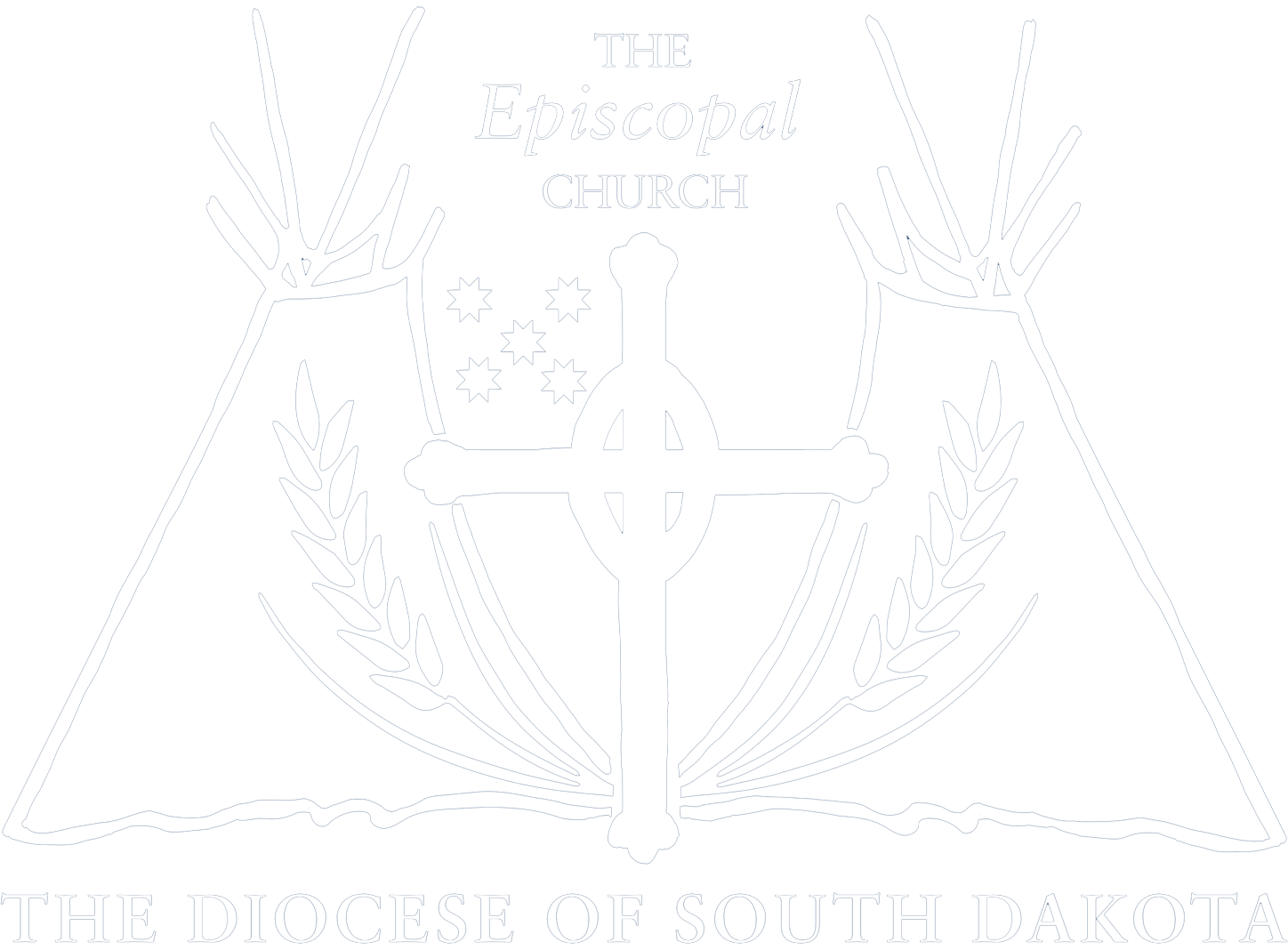The above photo: Warren Hawk, Niobrara Itachan, last weekend at the 153rd Niobrara Convocation in Eagle Butte, South Dakota. Photo: Cheyenne River Episcopal Mission.
[Episcopal News Service] Indigenous Episcopalians in South Dakota, inspired by Navajo Episcopalians’ recent creation of their own missionary diocese, are taking steps to explore the possibilities and challenges of forming their dozens of South Dakota congregations into an independent diocese.
On June 28, at an annual Indigenous gathering known as the Niobrara Convocation, members voted to begin researching the concept. Indigenous leaders, with the backing of South Dakota Bishop Jonathan Folts, plan to form an exploratory committee with two members from each of the diocese’s eight mission areas that serve Native American reservations in the state.
The goal, as it was for the missionary diocese known as Navajoland, would be to achieve greater self-determination, including the calling of their own bishop. Like Navajoland, Indigenous Episcopalians with deep roots in the Dakotas have ties to The Episcopal Church dating back generations. At the same time, church leaders acknowledge that the two contexts are very different, and they caution that any such successful effort in South Dakota would first require a major investment of time, research, deliberation and preparation.
“There’s been talk of it off and on through the years and what that would look like,” Warren Hawk, the outgoing Niobrara itancan, or convocation chair, told Episcopal News Service this week. The first step, approved last weekend, was “just to take a look at it.”
Hawk had raised the idea with Folts earlier last week while they were attending a meeting of Executive Council, of which both are members. Executive Council is The Episcopal Church’s governing body between meetings of General Convention.
Executive Council had just voted to accept the constitution for the newly created Missionary Diocese of Navajoland. The new missionary diocese includes congregations in Arizona, New Mexico and Utah that formerly were part of a mission area created by The Episcopal Church in 1977 to serve Navajo Nation communities.
During Executive Council’s discussions, Hawk mentioned there had been “whispers” in South Dakota for many years about whether Indigenous congregations there also should pursue self-determination, but no formal steps had been taken toward forming a new diocese.
Folts invited Hawk to draft an exploratory proposal for presentation at the 153rd annual Niobrara Convocation, held June 26-29 in Eagle Butte, South Dakota, and hosted by the Cheyenne River Episcopal Mission.
Folts told ENS that in his June 28 speech to Niobrara attendees he encouraged them to engage with the idea, and “let’s start turning this into open conversation and dialogue.” Navajo Episcopalians had worked long and hard to achieve missionary diocese status, which has been celebrated churchwide. Doing the same in South Dakota wouldn’t be easy, Folts said, but he sensed many Episcopalians in his diocese had a passion for trying.
“Let this year be a year of research and conversation,” he said.
The Diocese of South Dakota has more than 50 Indigenous congregations spread across its eight mission areas: Cheyenne River, Mni Sose, Pine Ridge, Rosebud East, Rosebud West, Santee Yankton, Sisseton and Standing Rock. Those mission areas and congregations form the core of the Niobrara Convocation, also known as the Niobrara Deanery. The convocation and the Diocese of South Dakota have roots in the Missionary District of Niobrara, founded by the church in 1871 in the Dakota Territory.
In 1883, Niobrara was incorporated into the Missionary District of South Dakota, which became the Diocese of South Dakota in 1971. (South Dakota achieved statehood in 1889.)
Niobrara has continued to serve as a unifying convocation, primarily for Episcopalians of Lakota, Dakota and Nakota heritage, also known collectively as the Sioux, Oceti Sakowin or people of the Seven Council Fires. Typically hosted by a different South Dakota church each year, Niobrara’s annual June gatherings also bring together some members from outside the Diocese of South Dakota.
Potential challenges to elevating Niobrara to a missionary diocese include canonical requirements, administrative structure, financial viability and clergy deployment, as well as the question of whether and how to accommodate members outside South Dakota.
Folts also said that if the research and discernment process eventually produced a formal proposal to separate Niobrara from the Diocese of South Dakota, the plan likely would need the approval of a large majority of both the Niobrara congregations and those remaining in the South Dakota diocese.
Navajoland, by contrast, did not need direct approval from the dioceses of Arizona, Rio Grande or Utah, because it already was established separately as a churchwide mission whose bishop had been appointed by the House of Bishops. The Episcopal Church’s 81st General Convention authorized Navajoland to form a missionary diocese in 2024, and its creation was finalized last month by Executive Council’s vote.
Despite the challenges in South Dakota, Hawk said he and other Niobrara members are excited to study the concept.
“It’s really just to look into the possibilities of it,” Hawk told ENS. “I’m hopeful that it would happen, but there’s a lot to consider, the organizational aspect of it, how it would proceed, capabilities.”
Whatever the outcome, he thinks the conversations will spark renewed interest in planning for The Episcopal Church’s future in South Dakota’s Indigenous communities. “All of this is in essence to encourage a lot of our church membership to get back involved with our mission churches,” he said.
– David Paulsen is a senior reporter and editor for Episcopal News Service based in Wisconsin. He can be reached at dpaulsen@episcopalchurch.org.

